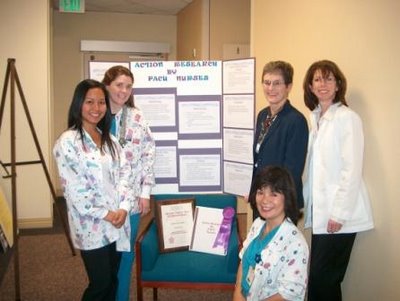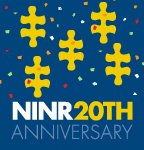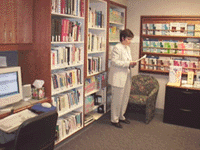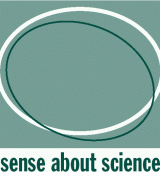St. Joseph Hospital
Nursing Evidence-based Projects
1.
Assessment of community based smoking/tobacco cessation training program for healthcare professionalsInvestigators: Tim Chen, PharmD; Pamela Matten R.N., O.C.N.; Siu-fun Wong, PharmD
Purpose: To determine the effectiveness of a community based tobacco cessation training program for healthcare professionals.
Methods: Rx for Change: Clinician-Assisted Tobacco Cessation is a 7-8 hr tobacco cessation training program designed for use in pharmacy schools. Using the basis of Rx for Change, a 3-hour modified multidisciplinary program, incorporating 2-hour lecture-based module (behavioral counseling and pharmacotherapy) and 1-hour interactive session with role-playing, will be held 3 times per year. Initial program participants will be inpatient nurses. Due to the nature of the nurses’ patient contact, the program will emphasize on first 4 of the 5A’s (Ask, Advise, Assess, Assist, Arrange). Outcomes research evaluating the effectiveness of the training program will be conducted using pre, post, and follow-up surveys at 3, 6, and 12 month.
2.
Time and motion study to evaluate the costs of cardioversion for atrial fibrillationInvestigators: Suzanne A. Feigofsky, MD; Donald J. Mahon, MD; Warren D. Johnston, MD; Tyson Cobb, MD; Thomas Kim, MD; Mila Garcia, NP; Beverly Niemeyer, RN
Purpose: The goals of this study are to quantify costs of both direct current cardioversion and pharmacologic cardioversion for treating atrial fibrillation and to evaluate the responsiveness of two new questionnaires to assess the symptoms and health-related quality of life impact of atrial fibrillation.
3. Oral care attitudes in ICU nurses
Investigator: Dana Rutledge, RN, PhDPurpose: To obtain information about current oral care practice; oral care training; and nurses’ attitudes related to oral care in intensive care unit.
Methods: This comparative pre/post study aims to describe oral care practices, training, and nurses’ attitudes along with VAP rates before and after the implementation of an evidence-based oral care protocol in intensive care units (ICU) at a community hospital. The research sample consists of RNs working the intensive care units (ICU). Nurses will be evaluated for attitudes and knowledge about oral care before and after a change in oral care practices. VAP rates in ICUs 3 months prior to an oral care protocol change and those 3 months after will be compared.
4.
Examining the factor that influence males decisions to choose nursing as a career Investigator: Sabrina Valentine, RN, BSN
Purpose: To explore the factors that influence men to enter nursing as a
career.
5.
Knowledge and attitudes assessment toward pain management of registered nurses at St. Joseph HospitalInvestigators: Maureen Mikuleky, RN; Dana Rutledge, RN, PhD; Carmen Belasario, RN; Shivi Dixit, RN, BSN
Purpose: To determine the current knowledge and attitudes of St. Joseph Hospital registered nurses by shift and department. Based upon the unit-based knowledge and attitudes, to develop and implement unit-specific educational interventions, and then, reevaluate unit-based knowledge and attitudes toward pain management.
6.
Presenting symptoms for acute coronary syndrome studyInvestigators: Beth Winokur, RN, MSN, CEN; Joseph Barrea, RN, BSN; Amy Waunch, RN, MSN, CEN; John Senteno, RN, BSN
Purpose: To describe presenting symptoms of patients with acute coronary syndrome (ACS) admitted to the emergency department, and to describe symptoms by sex and by ethnic groups. Also, to determine if patients with ACS who desire interviews in a language other than English differ in the symptoms reported on 2nd (non-initial) interview done by a person speaking the patient’s language.
7.
CalNOC Partners for Quality TRIP to Reduce Hospital Falls
Investigators: Kathleen Penzes, R.N.
(Include in summary – no info in IRB other than policies)
8.
Clinical Narratives: Evaluation for Components of CaringInvestigators: Dana Rutledge, PhD, RN
Purpose: To analyze clinical narratives written by nurses at St. Joseph Hospital.
Methods: This descriptive study aims to analyze clinical narratives written by nurses at St. Joseph Hospital in order to determine the following questions.
1. What types of patient care experiences do nurses consider as “a clinical experience that reflects an incident in which they feel their intervention or their relationship with their patient made a difference “?
2. To what extent do the narrative experiences describe specific caring behaviors by nurses (e.g., spending time with the patient, being hopeful for the patient)?
3. To what extent are the five dimensions of Watson’s Theory of Caring reflected in the narratives?
4. Do narratives of nurses who are less experienced (new graduates or orientees) differ in terms of the caring dimensions than are narratives of experienced nurses at St. Joseph Hospital?
5. If a difference is present, does the magnitude of the difference change over time (as the Watson Model is incorporated into care at St. Joseph Hospital)?
9.
Emergency Department Pediatric Temperature StudyInvestigators:Amy Waunch, MSN, CEN, FNP, Michael Vicioso, RN; Christine Marshall, RN, MSN, Beth Winokur, RN, MS, CEN
Purpose: To compare temple thermometer readings in emergency department patients 17 and younger with oral, rectal, and axillary temperature. A study sub-aim is: Inpatients who have received antipyretics, to evaluate the presence of a “lag” in any temperature measure (oral, rectal, axillary, temporal) compared to the others due to physiologic responses to the antipyretic.
Design: A correlational comparative study is proposed.
Sample: In the SJH ED, 300 pediatric patients 4 – 17 years of age (Group 2) and 300 infants and children less than 4 years (Group 1) will be invited to join the study. In order to gain maximal variability in temperature, children most likely to have fever will be preferentially recruited.
10.
Patients on 96hrs Continuous Ventilation in ICU: Improving Interdisciplinary Communication and Ethical Decision MakingInvestigators: Carmen Ferrell, RN, MS
Purpose: To determine the effects of early ethics interventions in intensive care patients on the ventilator 96 continuous hours on improved team communication and decision making in accord with patient preferences.
Methods: SJH intensive care units will be part of a St. Joseph Health System project to determine the effects of a chaplain/nurse proactive ethics consultancy for patients who have been on 96 hours of continuous ventilation.
Sample: ICU patients who have been ventilated for 96 hours
Setting: All SJH intensive care units (medical, coronary care unit, cardiovascular ICU)
Design: Pre/post evaluation of chart audits on measures to include demographic data (age, ethnicity, race, religion, admitting diagnosis, discharge diagnosis), cost parameters (ventilator days, ICU days, total LOS), issues and decisions communicated and documented.
Intervention: Proactive ethics consultation will occur during daily ICU rounds and will be led by either a chaplain, or Carmen Ferrell, a nursing director. The consultation will occur following chart review that explores the following 7 questions:
• Has the patient created or expressed any directions with respect to treatment?
• Is the patient currently competent?
• Is the patient, the whole team and the family aware of patient’s current diagnosis, prognosis, treatment objectives and alternatives?
• Do any treating physicians anticipate hurdles to recovery. What are they and what are the indicators of response to treatment.
• Is there any discussion or concerns about the limits of treatment for this patient?
• Are the ethical issues identified and understood in the Ready Reference Grid?
• Are there any unaddressed issues regarding patient care, management, patient preferences, or communication?
During rounds, the consultants will raise issues arising in conversations about issues arising from the above questions. These consultants will facilitate ethics discussion on issues arising from the questions. They will assist in the decision making process and bring to the surface difficult questions. If a difficult care dilemma is not easily resolved, the consultants will follow standard protocols per SJH (e.g., palliative care consult), and if necessary, obtain formal consultation through the ethics consultation (ACES) This is the end of the consultation.
Issues raised, discussion ensuing, and outcomes will be charted in the progress notes of the patient record. The attending physician will document necessary decisions/orders.
The intervention will last for 3 months.
11.
Conference – October 13, 2006
“Pain Solutions Evidence-based Approaches to the Care of Persons Experiencing Pain”Conference committee: Dana Rutledge, Peggy Walsh, Geri Westad, Pati Hagen, Pam Riley, Peggy Delmastro, Meri Van Gordon, Shivi Dixit, April Beachler, Vivian Norman, Nickol Frantzich, Mary Welly, Melissa Ogata, Jill Donaldson (Mission Hospital), Gloria Franklin (St. Jude Medical Center), Karen Savage.
Program Objectives:
· Discuss the relationship of scientific evidence to clinical recommendations in pain management
· Describe clinical issues and initiatives related to pain management
· Apply evidence in discussions with clinical cases
 SJH/CHOC employees can access these article through Burlew Medical Library.
SJH/CHOC employees can access these article through Burlew Medical Library.































